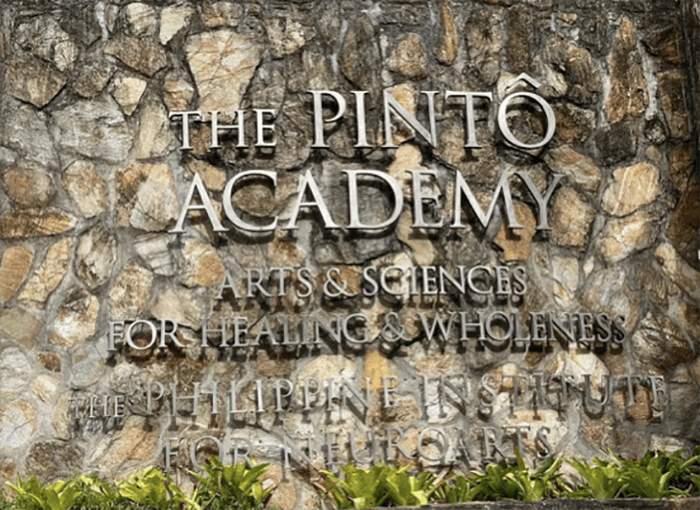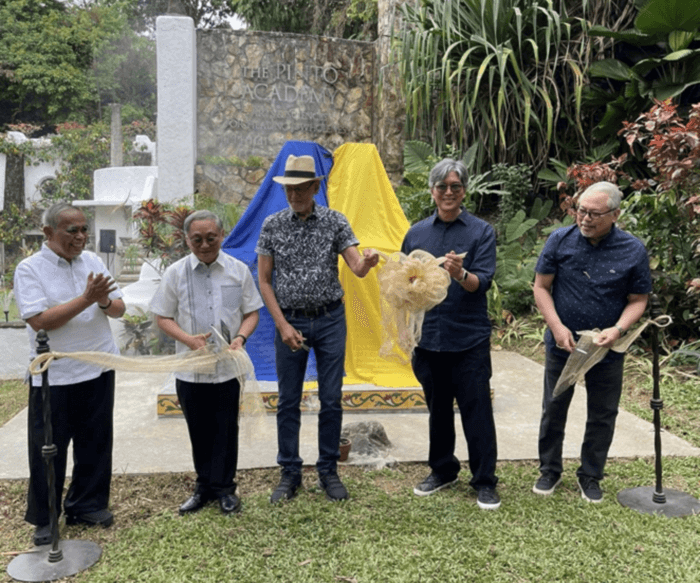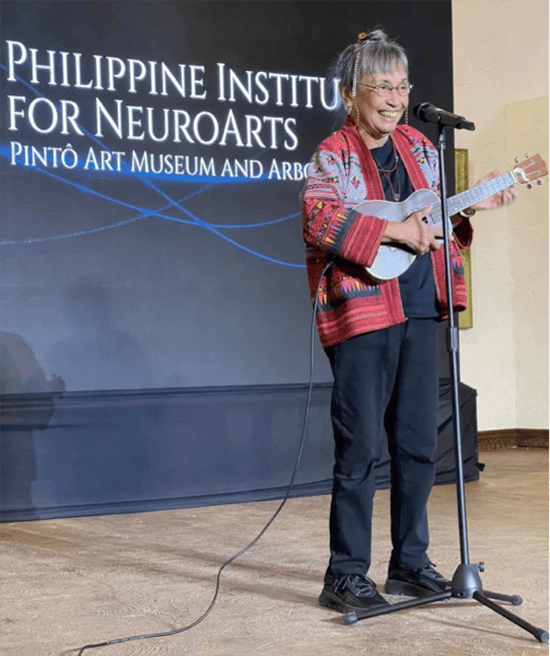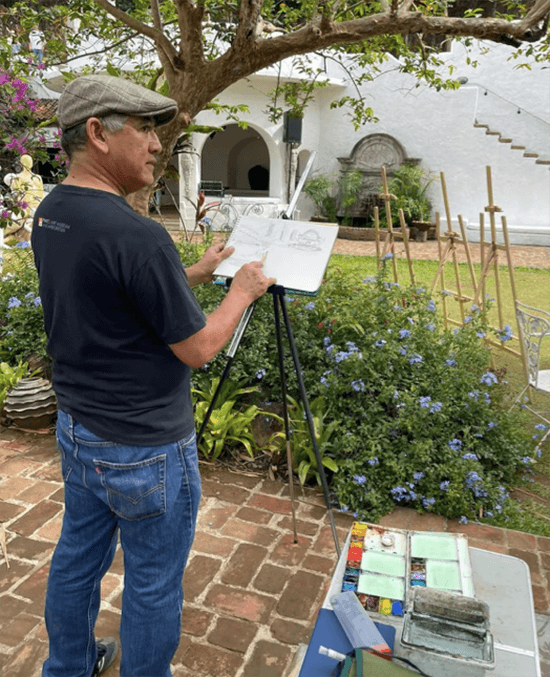This is your brain on art
Last May 9 at Pintô Art Museum and Arboretum, more than 160 individuals gathered for the official inauguration of the Philippine Institute for NeuroArts. The event was hosted by Dr. Nathan Pineda and started with moving performances from Billy Bonnevie and Agnes Arellano, followed by the unveiling of Mark Justiniani’s sculpture, “Ang Debatè.” Dr. Norberto Lingling Uy (president and CEO of UERM Memorial Medical Center), Dr. Antonio Ramos (president of DLSU Health Sciences Institute) and National Artist BenCab gathered as Justiniani explained how his first bronze sculpture came to be. Performance artists Aze Ong and Sam Penaso then graced the stage and left the crowd in awe; works by plein air artists Dr. Brylle Catague, Dr. Kenver Resuello, Gejo Jimenez, Ton Ador, Dr. Janet De Grano, Sarah Liuson Ongsun, Happy Navarro and Cher Cabala Mendoza were unveiled, truly embodying the spirit of NeuroArts.
The newly announced Philippine Institute for NeuroArts promises to employ various art media in healing and recuperation therapies.

But what is NeuroArts?
“NeuroArts and the institute has been an initiative years in the making,” said Dr. Joven Cuanang, founder of the Philippine Institute for NeuroArts, in his opening remarks. “When we constructed Pinto Art Museum and Arboretum, the intention was to make it a place of healing and wellness. I realized the power of the arts when I had my bypass operation 25 years ago. I listened to my favorite music while in the recovery stage, and I never once asked for a pain reliever to address my pain.” Dr. Cuanang shared his personal experience of art and nature, its role in healing and wellness, and now it inspired the Philippine Institute for NeuroArts.

Art and nature span various forms. The mechanisms by which these art forms affect our brain, psyche and wellbeing were discussed by adult neurologists. Dr. Dy, co-founder of the institute, shared his insights and perspectives on how art and nature positively impact our health. “Put art and nature together, you get a perfect marriage… I believe everyone is an artist,” he said.
A soothing musical performance by Agnes Arellano followed, with an encore of two original song pieces. Dr. Johanna Sarmiento, founding member of the institute, shared why and how music evokes strong emotions, allowing us to express emotions beyond mere words. “Music is an integral part of one’s sense of self. For our patients with neurodegenerative diseases, it is found that response to music remains preserved no matter how advanced the disease is,” she stated.

Dr. Sarmiento’s talk was followed by poetry reading by Philipp Ines and Dr. Kenver Resuello; after which Dr. Patricia Andaya, another founding member of the institute, spoke of how literature allows us to put ourselves in the shoes of our favorite characters. “Reading can stimulate areas of the brain that would normally be triggered by real-world experiences,” she said. “Exploring literary works activates mirror neurons, cells which allow us to simulate the actions and emotions of others, allowing us to empathize with characters and experience their emotions as if they were our own.”
Dr. Jacqueline Dominguez explains “INDAK: Improving Neurocognition through Dance and Kinesthetics.”

Last but not least, dance is probably one of the oldest and most enjoyable art forms. But can dancing preserve and even improve our memory? It might sound farfetched, but Dr. Jacqueline Dominguez, one of the foremost dementia experts in the country and in Asia, explained her excitement at first implementing dance therapy for a research study back in 2009. From this idea came “INDAK: Improve Neurocognition through Dance and Kinesthetics.” In her study, more than 100 randomly selected seniors underwent complex dance therapy while another 100 selected seniors did not undergo the treatment. She found the group that underwent dance therapy twice a week for one year had significantly improved memory scores and overall mood.

The Pintô event was also attended by Department of Health Secretary Dr. Teodoro Herbosa, who spoke about drawing as his chosen art form, from sketching out the surgical findings of patients he’s operated on and attending drawing sessions during scientific conventions. “Drawing is my art,” he said. “I finish the stitches and suturing of my patients after their surgery because their scars are also a form of art.” Back in June 2023, as newly appointed Secretary of Health, he recalled wanting to rename the DOH as the Department of Health and Wellness. “During my era when I was studying medicine, medicine was considered both an art and a science. Now it has shifted to become predominated by science. I think it’s time for a change and to put art back into medicine,” he remarked. He lauded the Philippine Institute for NeuroArts and expressed his support for its future initiatives and endeavors.

With the support of the DOH, the institute can truly break ground and usher in a new era for health and wellness in the Philippines.
Truly, as Ralph Waldo Emerson wrote, the mind, once stretched by a new idea, never returns to its original dimensions. To that, Dr. Joven Cuanang has added: “Enter and be healed by art and nature. Depart and leave a better person.”


